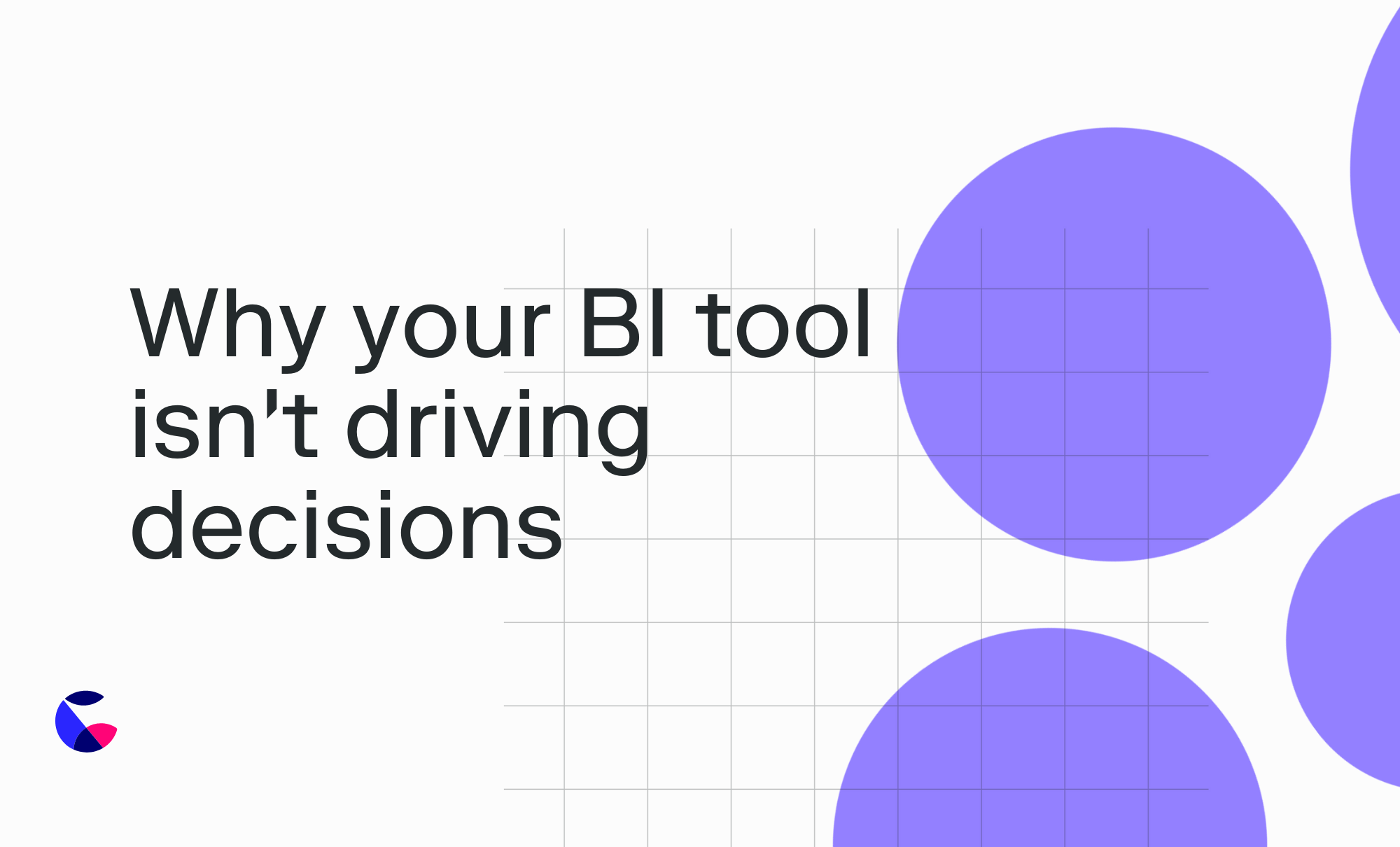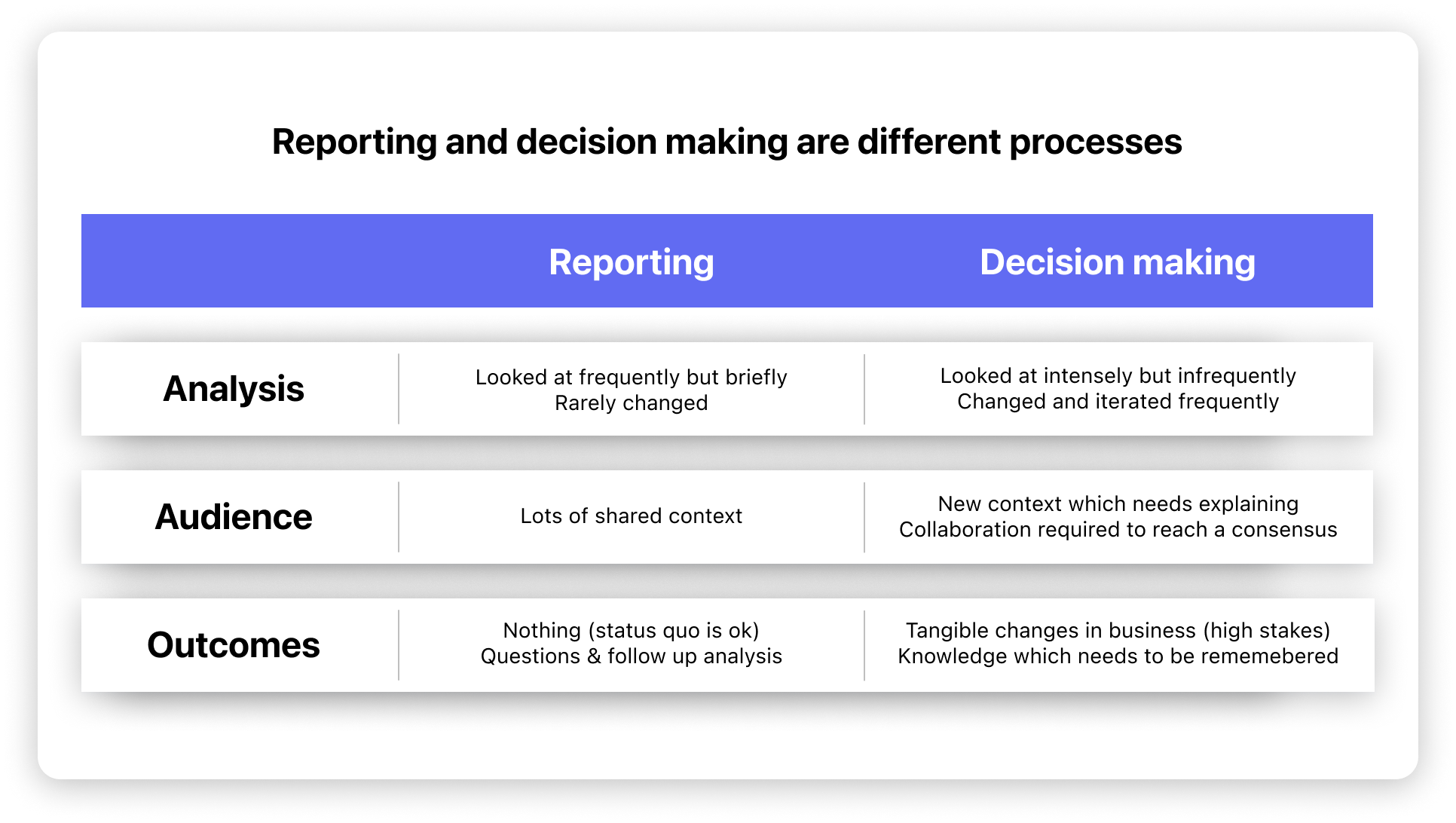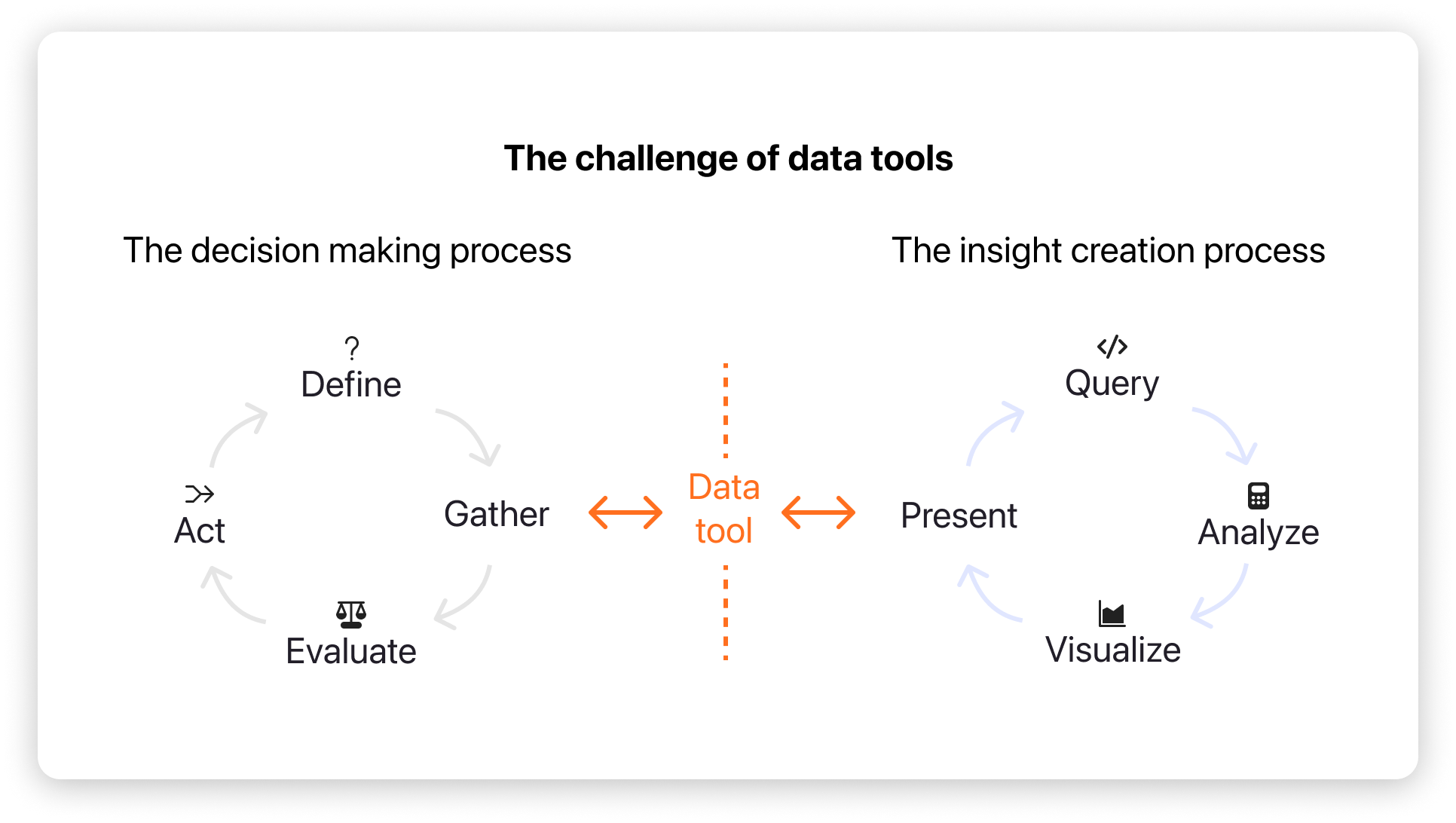Why your BI tool isn't driving decisions
How shifting our attention to where and how decisions are made can help change that.

As data practitioners, it is always our intention to facilitate better decision-making. It is our strong belief that data has a unique ability to help us move beyond emotional, “gut-feel” impulses into factual, universal, and tangible improvements, and it is our core responsibility to make that happen in our teams and communities.
So what may come as a surprise to you, as it has to me very recently, is that despite this focus on decision making, the tools we’re using are fundamentally flawed and potentially actively unhelpful towards this goal.
Despite our best efforts dashboards remain the primary way data insights are communicated around an organization. Dashboards are fundamentally reporting tools, providing business users a way to consume facts and figures on a regular cadence and, to be fair, they do this pretty well.
The problem comes when dashboards are described and used outside of this relatively narrow use. What makes them brilliant for reporting makes them actively unhelpful for anything else.
Decisions are not created equal
Reporting tools are like Siri or Alexa for businesses - they fulfill our daily orders of contextless questions, like “What is the weather today?”
The answers to these questions may help someone make a tangible decision like “What should I wear today?” but they are small contributors to the greater decision.
The complex decisions we make on a day-to-day basis are the result of a mosaic of information, some of its data, but most of its not.
For example, let’s review what happens when, let’s say, you review your daily sales numbers:
- Generally, these numbers are well understood because they are some of the most important metrics in the business.
- The report requires very little explanation because its structure doesn’t change, and, as the report is reviewed frequently, the report’s audience becomes comfortable with what they’re seeing and trust what it says.
- The report is generally consumed individually and only discussed by exception because quite often the report shows nothing out of the ordinary.
- When something does change, this generally creates questions and further follow-up analysis i.e. the report creates questions, but it rarely answers them.
In comparison in order to make a decision about your sales strategy, the context is often very different.
- The numbers being discussed are often new and need explanation because they’re often created specifically for the new strategy being considered.
- The need for explanation is exacerbated because the whole process involves a lot of change as the numbers and facts are created, wrestled with, and changed.
- Perhaps most importantly, this decision to change the sales strategy will require multiple people to agree. Sales managers, the CFO, and the wider sales team need to collectively wrestle with quantitative and qualitative data together to reach a consensus. They need to reach an endpoint, a conclusion, the outcomes of which could be hugely significant. In this more complex example you can see how the numbers form an input into a wider more complex discussion
In short, decisions are messy, and reporting tools are not.

In order to help our business partners use data to make complex decisions, we’re in need of a new class of tools that are built for this specific purpose.
If data’s about decisions, why aren’t our tools?
In this wider context, it’s easy to see that data tools can actually act as a barrier to the decision-making process. Because their focus is on the presentation of data insights they actively separate the process of insight discovery from the wider decision-making process.

To put it simply none of our reporting tools are fundamentally designed to support the process of turning insights into actionable decisions; they create the insights but don’t support the “now what?!” which needs to follow.
Supporting the “now what?!” is something we’ve coined as the “last mile” of analytics. Currently, this process happens outside of any tool and can lead to some very painful workflows, and sub-optimal outcomes all around.
To date, as an industry, we’ve spent enormous amounts of energy and effort making sure we are serving up accurate data to our organizations (and rightly so!), but, now with this in hand, it’s time we delivered something more actionable. We believe this is where the future of data tooling lies.
This is why at Count we’ve shifted gears in efforts to create the world’s most collaborative analytics tool, one that is focused on building consensus, making decisions, and taking action.
We’re currently in private beta, but if want to pioneer a new way of working with data that leaves your static dashboards behind, let us know here!
